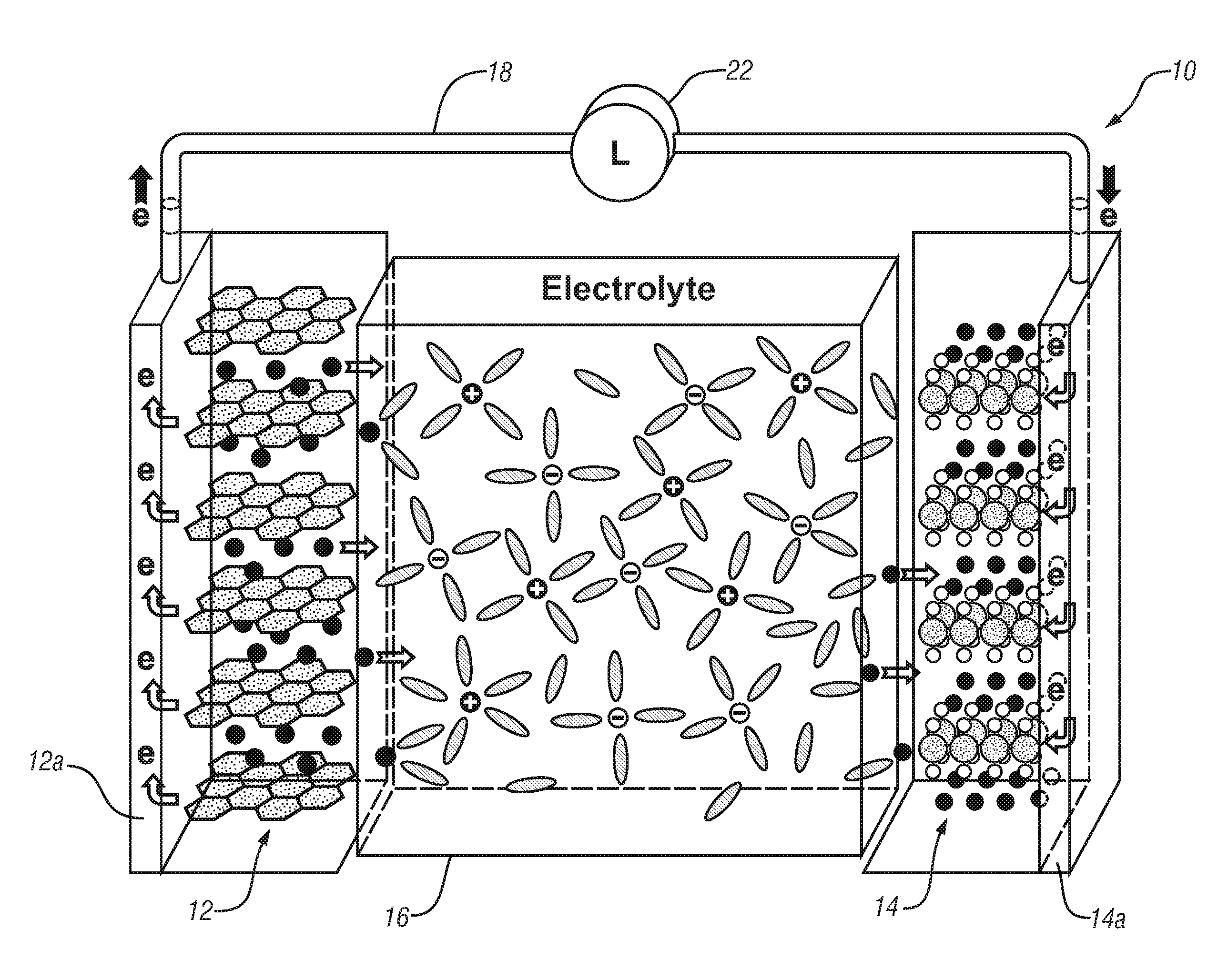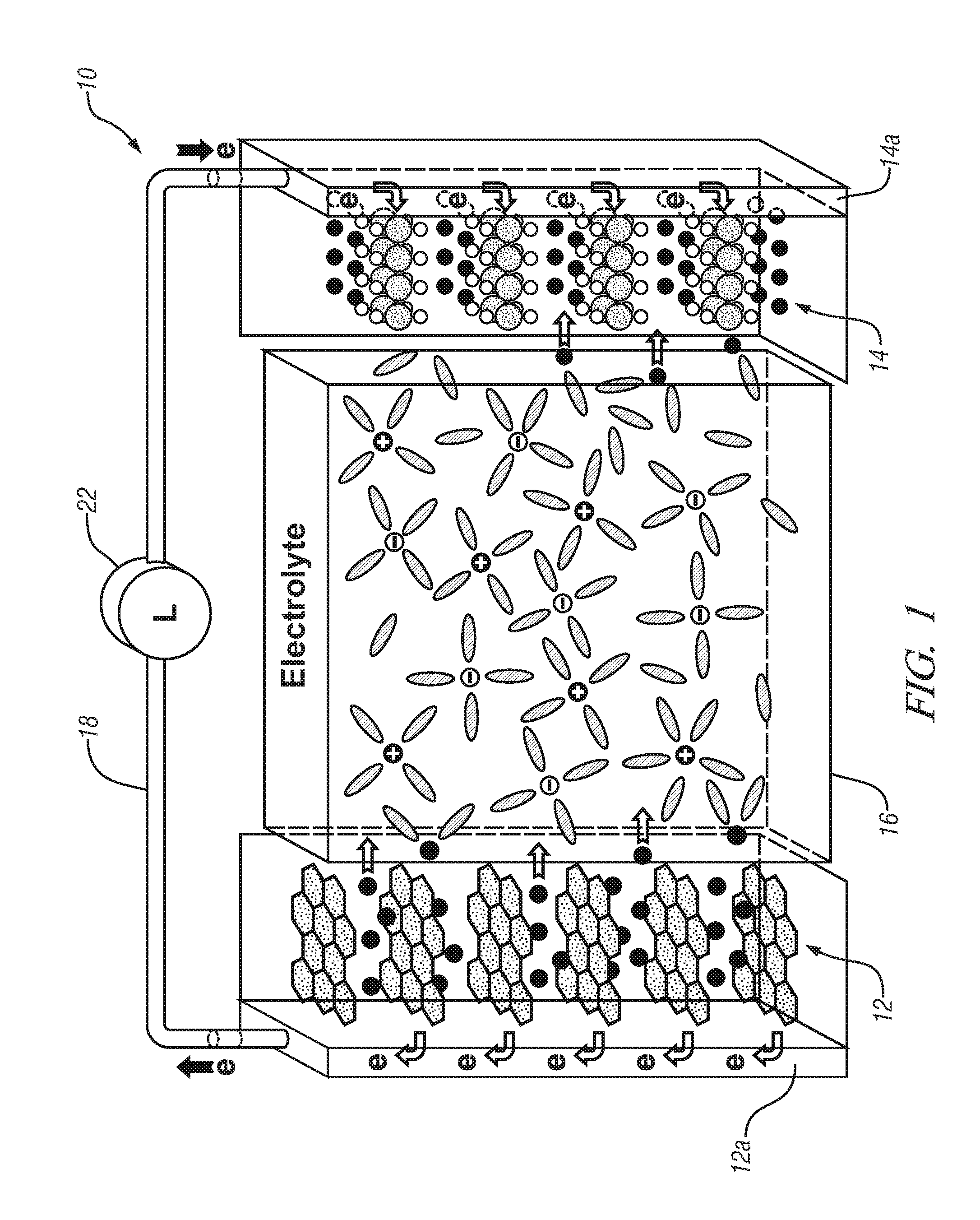Lithium-ion batteries with coated separators
a technology of lithium-ion batteries and separators, applied in the field of porous polymeric separators, can solve problems such as lack of memory, and achieve the effect of small environmental impact and appreciable thermal conductivity
- Summary
- Abstract
- Description
- Claims
- Application Information
AI Technical Summary
Benefits of technology
Problems solved by technology
Method used
Image
Examples
Embodiment Construction
[0023]The following description of the embodiment(s) is merely exemplary in nature and is not intended to limit the invention, its application, or uses.
[0024]Embodiments of this invention are practices to form conformal coatings on a porous polymeric workpiece such as a porous polyolefin substrate for a lithium-ion battery. Before further illustration of coating processes it may be helpful to illustrate the lithium-ion battery environment in which the separator functions.
[0025]An exemplary and schematic illustration of a secondary lithium-ion battery 10 is shown in FIG. 1. Lithium-ion battery 10 includes a negative electrode 12, a positive electrode 14, a microporous polymer separator 16 (shown in enlarged outline view) sandwiched between the two electrodes 12, 14, and filled with Electrolyte. A negative electrode current collector 12a and a positive electrode current collector 14a may be positioned at or near the negative electrode 12 and the positive electrode 14, respectively, to...
PUM
| Property | Measurement | Unit |
|---|---|---|
| thickness | aaaaa | aaaaa |
| porosity | aaaaa | aaaaa |
| thickness | aaaaa | aaaaa |
Abstract
Description
Claims
Application Information
 Login to View More
Login to View More - R&D
- Intellectual Property
- Life Sciences
- Materials
- Tech Scout
- Unparalleled Data Quality
- Higher Quality Content
- 60% Fewer Hallucinations
Browse by: Latest US Patents, China's latest patents, Technical Efficacy Thesaurus, Application Domain, Technology Topic, Popular Technical Reports.
© 2025 PatSnap. All rights reserved.Legal|Privacy policy|Modern Slavery Act Transparency Statement|Sitemap|About US| Contact US: help@patsnap.com



